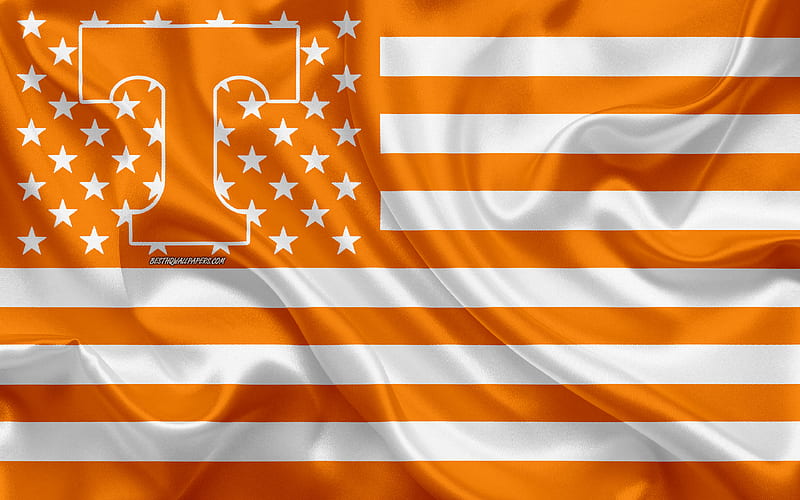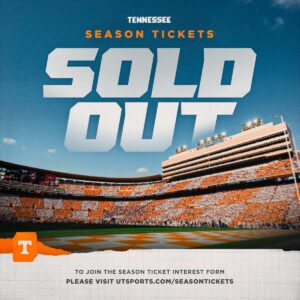
Many renowned players in the NFL have come from the Tennessee Volunteers, but some early draft picks had unsuccessful careers after leaving Knoxville.
Following a breakout season in 2022, Tennessee produced four more players picked on Day 2 of the draft in addition to Darnell Wright, the Chicago Bears’ No. 10 overall selection. Josh Heupel’s Volunteers, however, didn’t have nearly as much success in 2023, and the 2024 NFL Draft will probably reflect that.
It’s still worthwhile to revisit the biggest draft blunders in Tennessee history, even with just three players expected to attend the NFL combine in Indianapolis and no Vols predicted to be taken in the first round.
Not all first-round selections, particularly those of quarterbacks, have the potential to be like Peyton Manning. Tennessee has had highly-drafted quarterbacks who broke teams’ hearts, but Joe Milton III won’t be taken high enough to do so. Let’s examine the list to see whether the quarterback selected third overall in the 1994 NFL selection is the biggest NFL draft bust in program history for Tennessee.
1 Heath Shuler, QB
1994 |�No. 3 overall
With Mark Rypien as quarterback, Washington finished 4-12 in 1993—two years after winning a Super Bowl—so Norv Turner, the new head coach, had to bring in his quarterback. Shuler, the 1993 SEC Player of the Year, was selected by Washington at No. 3 overall.
As a rookie, Shuler started eight games and finished 1–7 with 45.3% completion percentage, 10 touchdowns, and 12 interceptions. He continued to be the team’s starter in 1995 despite his dreadful debut campaign, but things got worse.
Shuler completed 5/12 passes for 47 yards and one interception in Week 1 before being knocked out of the game. After missing the remainder of the season with three touchdowns and seven interceptions in five starts, he returned to action in Week 10.
Shuler was moved to New Orleans after playing in just one game without making a start in 1996. In 1997, he started nine games and recorded two touchdowns and fourteen interceptions. He was finally forced to retire from professional football due to a foot injury that kept him from playing for New Orleans in 1998.
2 Clyde Duncan, WR
1984 |�No. 17 overall
While at Tennessee, Clyde Duncan was Anthony Hancock’s teammate and was selected in the first round two years after Hancock. After Duncan finished his 1983 season in Knoxville with 640 yards on 33 receptions, the St. Louis Cardinals selected him.
Duncan’s career began later than expected due to a disagreement over a contract with St. Lous. Following their September agreement, Duncan suffered a separation of his shoulder and lost the coaching staff’s favor.
In 1984, Duncan did not catch a pass; the next year, he caught four catches for 39 yards. His main role was as a kick returner, and he averaged 19.6 yards per return on 28 kicks returned for 550 yards, but that was insufficient for St. Louis to keep him on the roster.
Following a torturous two years, Cleveland selected Duncan upon his release. He finished his career with four receptions and never appeared in a game for the Browns.
3 Justin Harrell, DL
2007 |�No. 16 Packers
Harrell was limited throughout offseason training due to a torn bicep injury he sustained in his final season at Tennessee, even though he was taken by Green Bay with the 16th overall pick. In time for the season, he recovered from injury and inked a six-year deal.
Even though he was a part of Green Bay’s success in Super Bowl XLV, Harrell only fulfilled four years of his contract before being cut before the 2011 campaign.
In his three-year career, Harrell only appeared in 14 games. He suffered a back ailment that kept him out of the 2009 season, tore his ACL in Week 1 of 2011, and missed the remainder of that season.
Harrell’s career was eventually entirely wrecked by injuries that plagued him. Even though he was healthy, he only recorded 27 career tackles and zero sacks in his 14 games played.
4 Anthony Hancock, WR
1982 |�No. 11 overall
In the early stages of the 2023 NFL Draft, the Kansas City Chiefs hope to add some new wide receivers to their roster for quarterback Patrick Mahomes; however, in 1982, they were hoping to pair Hancock with Bill Kenney.
Although Hancock did little to further Kenny’s career, the Chiefs may have benefited from an upgrade at quarterback. In nine games during the first year, Hancock only caught seven passes for 116 yards and a touchdown.
His second season was going to be even more significant since, in the 1980s, a lot of receivers needed a year or two to become used to the NFL game. With an increase in target volume, Hancock caught 37 catches for 584 yards and one touchdown. It was a positive step, but it was followed by two negative steps.
With just 10 catches in 1984, Hancock declined, and in the last three years of his five-year tenure in Kansas City, he only grabbed 29 passes. He was 26 years old when he concluded his career in 1986.
5 Charles McRae, OT
1991 |�No. 7 overall
Like Toles, McRae played different positions while at Tennessee; however, for his final two seasons in Knoxville, he moved from the defensive line to the offensive line. The Tampa Bay Buccaneers selected him in the top 10 in the 1991 NFL Draft, and he went on to become an All-SEC offensive tackle.
Only one pick separated McRae and fellow offensive tackle Antone Davis, who was selected by the Philadelphia Eagles with the ninth overall choice.
In his six-year NFL career—five of which were spent in Tampa Bay—McRae only started 39 of his 84 games as a starter before switching from tackle to left guard. In 1996, McRae joined with the Oakland Raiders, but his NFL career ended after just one game.
Although McRae’s career wasn’t the fifth worst on our list, he does rank as the fifth worst flop in Tennessee football history because of the huge expectations placed on him as the No. 7 overall choice.
6 Alvin Toles, LB
1985 |�No. 24 overall
Toles moved from fullback to linebacker while he was in Knoxville, and he adjusted well to his new position. He had 135 tackles, the most of any Volunteer, and eight tackles for a loss in 1983. Toles injured his ankle against Auburn and missed a large portion of the 1984 season.
Toles was selected in the first two rounds of the 1985 NFL Draft along with another Tennessee linebacker, after having a stellar collegiate career. Despite being selected in the second round, Carl Zander outperformed Toles in his career.
Toles’s career high point came against San Francisco in 1987 when he returned a block punt for a touchdown. During his four years in New Orleans, he mostly played on special teams. Although he did start 15 of 16 games for the Saints on defense in 1986, he was released from the league following 1988.
7 Robert Shaw, C
1979 |�No. 27 overall
Robert Shaw was selected by the Cowboys in the first round of the 1979 draft with the intention of using him as John Fitzgerald’s backup in his rookie campaign. Fitzgerald was injured in 1980, therefore Shaw played the final three games of Dallas’ playoff run as well as the final stretch.
Shaw was predicted to start at center field again in 1981, but failure can take many different forms. Not only can poor performance ruin a first-round pick’s career, but injuries may too. Shaw experienced an injured knee at the beginning of 1981.
His career was halted by that knee strain because he was never able to pass the Cowboys physical and did not play another game after 1981.
After being taken in the first round, Shaw began his career in Dallas as a backup, so I can’t completely blame his injuries for his lackluster career. Maybe he was a backup for a reason, or maybe he would have spent years anchoring a championship offensive line in Dallas. In any case, this list should include a three-year career with just six starts during the regular season.
8 Marcus Nash, WR
1988 |�No. 30 overall
This list has a three-time Super Bowl champion, Nash, who deserves to be ranked No. 8 despite being selected after Kelly and Barnett. It was fortunate for Denver that Nash didn’t add much assistance to an already strong offense when he was picked.
In his debut campaign, Nash caught four passes for 76 yards as the reigning champion Broncos won their second straight championship. Nash would only ever catch just four passes in his career.
He played in just three games in 1999 before being sold to Miami for John Avery, another previous first-round choice, but he was released a week later. After being picked up by Baltimore, he only appeared in one game, was targeted twice, and did not catch a pass.
Although Nash is the worst bust of all first-round wide receivers in history, I can’t justify ranking him higher on this list because he was the final pick in the first round and the Denver Broncos were able to win the Super Bowl even after drafting him.
9 Derek Barnett, DE
2017 |�No. 14 overall
In addition, Philadelphia overcame the error of selecting a Tennessee pass rusher in the draft to win a Super Bowl. After racking up 5.0 sacks in his rookie campaign, Barnett helped the Eagles defeat Tom Brady’s Patriots in the Super Bowl. Barnett recorded a sack while playing in all three playoff games.
Barnett played for the Eagles for seven years, earning 6.5 sacks in 2019. He also made the playoffs with Houston in 2023. Overall, Barnett’s career was mediocrely successful. In a draft that included Marlon Humphrey, Tre’Davious White, Jonathan Allen, and T.J. Watt, using the 14th overall pick should have been a disastrous mistake, but Philly’s roster was so strong in 2017 that it made little difference.
Barnett was clearly more productive than Todd Kelly, who was ranked No. 10, but in my opinion, Barnett is now ranked No. 9 due to the draft capital of a top-15 pick.
10 Todd Kelly, LB
1993 |�No. 27 overall
During his four years in Knoxville, Kelly was a top-notch linebacker, but he was not a good fit for the NFL. He only started five of the 14 games he played in his debut season with San Francisco, recording one sack and fifteen tackles.
That 1993 season was, in spite of all its lackluster qualities, maybe his greatest as a professional. He only recorded nine tackles and only started one game in 1994 while playing in 11 games and finishing with 3.5 sacks and two forced fumbles. As the 49ers defeated the Chargers in the postseason, Kelly was awarded a Super Bowl ring; nevertheless, he was cut before to 1995 and was claimed by Cincinnati.
After playing for two seasons in San Francisco and four seasons totaling 27 tackles, 5.5 sacks, and playing on three teams (Cincinnati, Atlanta), Kelly did not start another NFL game.
Although he was selected late in the first round and San Francisco went on to win a championship two years after making the error, he doesn’t rank higher on this list despite having a lackluster NFL career.





